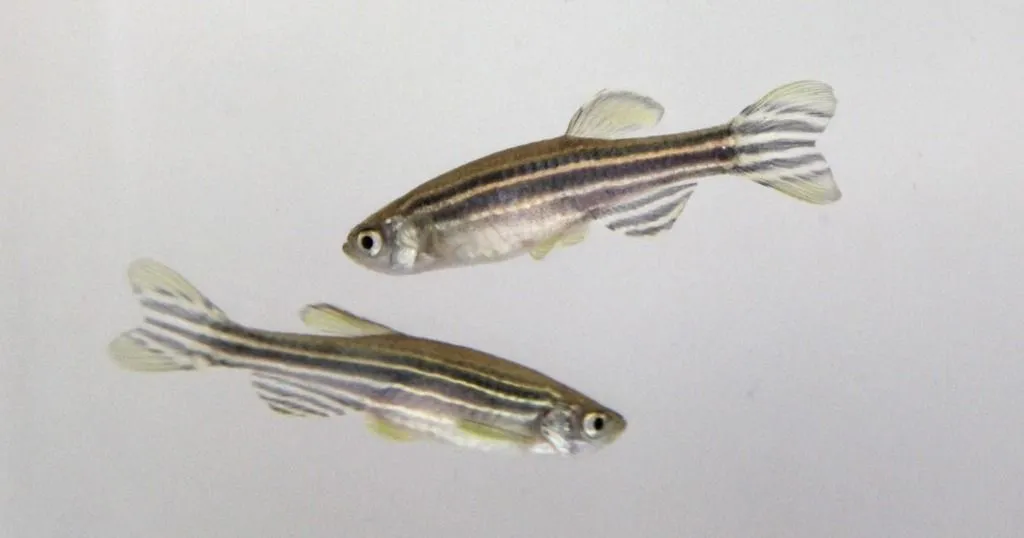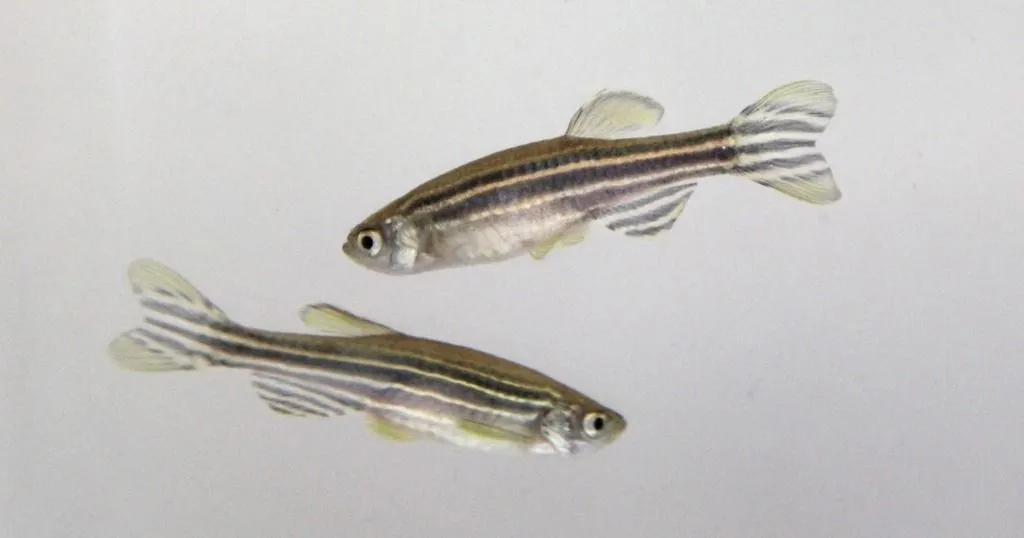Inhibitory avoidance learning in zebrafish (Danio rerio)
The zebrafish (Danio rerio) is increasingly being used as model in behavioural, neurobiological and genetic research.
Posted by
Published on
Fri 24 Oct. 2014
Topics
| Avoidance Learning | EthoVision XT | Learning And Memory | Video Tracking | Zebrafish |

By Remy Manuel, Marnix Gorissen and Ruud van den Bos
(email: [email protected], [email protected] & [email protected])
The zebrafish (Danio rerio) is increasingly being used as model in behavioural, neurobiological and genetic research. Underlying reasons are high genetic homology to humans and the many advantages over the use of rodents, such as low cost, easy handling, short reproduction cycle and high fecundity. Furthermore, its genome, transcriptome and proteome are well described, making the species a model of choice for behavioural research linked to genetics.
An emerging field addresses learning and memory related to anxiety and fear behaviour, which has been studied through inhibitory avoidance paradigms [1,2]. Assessment of inhibitory avoidance learning in zebrafish is based on the conflict between entering a dark area to avoid a brightly lit area (innate response; innate anxiety) and avoiding this dark area, as it has been associated with an electric shock as negative stimulus (conditioned fear avoidance). Higher latencies of entering the dark area following training are indicative of increased inhibitory avoidance learning.
Age
Like in mammals, zebrafish show reduced learning at old age: aged zebrafish (24 months) require an additional training day before showing a similar level of avoidance behaviour as 12-month (adult) zebrafish. Gene expression analysis of the telencephalon suggests that lower levels of neuronal plasticity underlie these observations.
Photoperiod
The zebrafish is a diurnal species with higher activity during the day-time and a lower activity at night. Like other animals zebrafish have circadian rhythms that are entrained by light. Housing zebrafish under long periods (i.e. 42 days) of continuous light leads to a strong reduction in inhibitory avoidance learning. Changes in the expression of stress-related genes suggest that changes in stress-axis activity underlie the observed reduction in avoidance learning.
Chronic stress
Zebrafish show reduced avoidance learning when exposed to (weeks of) unpredictable chronic stress (UCS). Similar to what has been reported for rats, the negative effects of UCS seem stronger when stressors are applied during the resting/sleep phase than during the active/awake phase. UCS-induced changes in stress-axis activity, expressed as increased levels of whole-body cortisol and accompanying changes in the expression of stress-related genes, likely underlie the observed reduction in avoidance learning [3,4].
Enrichment
To ensure proper water quality, laboratory fish are often housed in barren aquaria. However, adding enrichment has been shown to reduce anxiety-like behaviour, increase brain volume and improve performance in spatial learning tasks. Inhibitory avoidance learning is reduced following housing under enriched conditions. Analysis of genes in the telencephalon suggests that zebrafish may be less sensitive to the impact of the electric shock used in the paradigm.
Avoiders and non-avoiders
In the inhibitory avoidance learning paradigm, two distinct types of responders are observed: fish that strongly avoid the black compartment (avoiders) and fish that quickly enter the black compartment (non-avoiders). These differences in avoidance behaviour are associated with differences in whole-body cortisol content as well as expression levels of genes related to learning, memory and anxiety. [5]
Behavioural analysis
During inhibitory avoidance learning, behaviour has been recorded and analysed post-hoc using EthoVision XT v10.0 tracking software (Noldus, Wageningen, the Netherlands). Preliminary data analysis suggests that no differences exist between avoiders and non-avoiders in spatial preference, swimming speed and distance moved before lifting the sliding door.
However when the sliding door is lifted and the dark – shock associated – compartment is accessible a difference is found: avoiders position themselves in the zone furthest away from the dark compartment, while non-avoiders freely swim around before entering the dark compartment (Figure 1). These data support the differences in levels of conditioned fear between avoiders and non-avoiders.
Future perspectives
Overall, our data suggest that the zebrafish is a suitable model to study gene-brain-behaviour relationships underlying learning and memory related to anxiety and fear. In addition, these data serve as starting point for unravelling individual differences in anxiety and fear-associated learning.
References
- Blank, M., Guerim, L. D., Cordeiro, R. F., & Vianna, M. R. M. (2009). A one-trial inhibitory avoidance task to zebrafish: rapid acquisition of an NMDA-dependent long-term memory. Neurobiology of Learning and Memory, 92(4), 529–534. doi:10.1016/j.nlm.2009.07.001
- Ng, M.-C., Hsu, C.-P., Wu, Y.-J., Wu, S.-Y., Yang, Y.-L., & Lu, K.-T. (2012). Effect of MK-801-induced impairment of inhibitory avoidance learning in zebrafish via inactivation of extracellular signal-regulated kinase (ERK) in telencephalon. Fish Physiology and Biochemistry, 38(4), 1099–1106. doi:10.1007/s10695-011-9595-8
- Piato, Â. L., Capiotti, K. M., Tamborski, A. R., Oses, J. P., Barcellos, L. J. G., Bogo, M. R., et al. (2011). Unpredictable chronic stress model in zebrafish (Danio rerio): Behavioral and physiological responses. Progress in Neuropsychopharmacology & Biological Psychiatry, 35(2), 561–567. doi:10.1016/j.pnpbp.2010.12.018
- Manuel, R., Gorissen, M., Zethof, J., Ebbesson, L. O. E., van de Vis, H., Flik, G., & van den Bos, R. (2014). Unpredictable chronic stress decreases inhibitory avoidance learning in Tuebingen Long-Fin zebrafish (Danio rerio Hamilton): stronger effects in the resting phase than in the active phase. Journal of Experimental Biology. doi: 10.1242/jeb.109736
- Manuel, R., Gorissen, M., Piza Roca, C., Zethof, J., van de Vis, H., Flik, G., & van den Bos, R. (2014). Inhibitory Avoidance Learning in Zebrafish (Danio Rerio): Effects of Shock Intensity and Unraveling Differences in Task Performance. Zebrafish. doi:10.1089/zeb.2013.0970
This is a guest blog post. Remy Manuel, Marnix Gorissen and Ruud van den Bos thank you so much for your contribution!
For more information about tools for zebrafish research, go to www.noldus.com/applications/zebrafish-video-tracking
Related Posts

What is DanioVision? A brief insight in zebrafish tracking

Tracking zebrafish activity to study a key element in circadian rhythmicity

